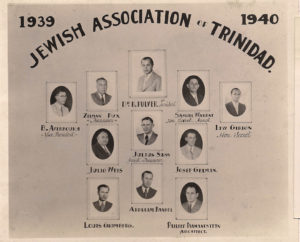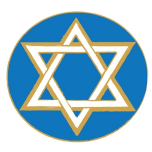 The first major Jewish immigration to the islands of Trinidad and Tobago occurred in the late 18th century. Then a second wave of Portuguese Jews arrived in the late 19th century, with a few also arriving from Curaçao. Nevertheless, many of these Jews assimilated and intermarried with locals. By the beginning of the 20th century, only 31 practicing Jews remained on the island. One of the most recognized Jews was Sir Nathaniel Nathan who served as Associate Justice of the Trinidad Supreme Court from 1893 to 1900 and Chief Justice from 1900 to 1903.
The first major Jewish immigration to the islands of Trinidad and Tobago occurred in the late 18th century. Then a second wave of Portuguese Jews arrived in the late 19th century, with a few also arriving from Curaçao. Nevertheless, many of these Jews assimilated and intermarried with locals. By the beginning of the 20th century, only 31 practicing Jews remained on the island. One of the most recognized Jews was Sir Nathaniel Nathan who served as Associate Justice of the Trinidad Supreme Court from 1893 to 1900 and Chief Justice from 1900 to 1903.
During the 1930s, many Jews fled to Trinidad from Europe escaping Nazi persecution. These new immigrants found housing rented by a Jewish aid society in the capital, Port of Spain. By 1939, the Jewish community had soared to 600 people. These Jews began to call themselves “The Calypso Jews,” creating a distinct cultural and religious life in Trinidad. It was during this time that the first synagogue was erected on Duke Street in Port of Spain. Also, a separate section of the Mucuapo Cemetery was reserved for Jewish burials, called Bet Olam. Today, the cemetery upkeep is maintained by Hans Stecher, one of the few remaining Jews in the country.
 During World War II, many of the Jewish families were interned in camps, considered as new “enemy aliens.” In 1943, the Jews were freed but with certain wartime restrictions. Many of the Jewish community chose to emigrate from Trinidad; but, many others attempted to return to the flourishing Jewish community of the early 1930s. By the mid 1950s the Jewish community reached its peak at around 700 people. Nevertheless, as children began to leave Trinidad to study at international universities, few returned. Of those young Jews who did return, most intermarried or assimilated.
During World War II, many of the Jewish families were interned in camps, considered as new “enemy aliens.” In 1943, the Jews were freed but with certain wartime restrictions. Many of the Jewish community chose to emigrate from Trinidad; but, many others attempted to return to the flourishing Jewish community of the early 1930s. By the mid 1950s the Jewish community reached its peak at around 700 people. Nevertheless, as children began to leave Trinidad to study at international universities, few returned. Of those young Jews who did return, most intermarried or assimilated.
In the 1970s, with the rise of “Black Power” riots, most of the remaining Jews immigrated out of the country, especially to Canada, in fear for their safety. Furthermore, religious artifacts from Trinidad were sent to Barbados to ensure their safety.
Despite this mass exodus in the 1970’s, Judaism hobbled on in Trinidad & Tobago for the next three decades, bringing us to the present – where the numbers are at a record low and the average age in the 6os. Today, the Jewish community numbers around 25-67 people and has no synagogue or rabbi, although St. Vincent Street once had one. Occasionally, communal services are held for Shabbat and holidays. There are also many people in Trinidad whose grandparents were Jewish, as well as many Conversos, descendants of Jews who converted to Roman Catholicism in Spain or Portugal, particularly during the 14th and 15th centuries.
 There is evidence of this brief renaissance of Jewish life in Trinidad. Most notably on every police car, policeman, and police station on the island, is the insignia of the police force which is a hummingbird within a Magen David. A British commander who came to Trinidad from Palestine put a white star against a blue background for the local army symbol, switching the colors of what was to become the
There is evidence of this brief renaissance of Jewish life in Trinidad. Most notably on every police car, policeman, and police station on the island, is the insignia of the police force which is a hummingbird within a Magen David. A British commander who came to Trinidad from Palestine put a white star against a blue background for the local army symbol, switching the colors of what was to become the
Israeli Flag.